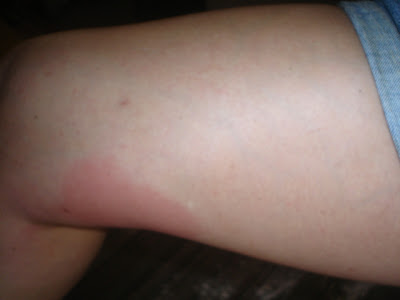Learn all about Trousseau syndrome symptoms, causes and treatment. Trousseau’s syndrome is defined as any unexplained thrombotic event that precedes the diagnosis of an occult visceral malignancy or appears concomitantly with a tumor.
Armand Trousseau first described this finding in the 1860s; he later found the same sign in himself, was subsequently diagnosed with gastric cancer and died soon thereafter. Trousseau presciently attributed thromboembolism in malignancy to changes in blood composition rather than local inflammatory or mechanical forces.
By correlating clinical observation with surgical and autopsy findings, Trousseau recognized that a localized cancer could induce a generalized hypercoagulable state in which thrombosis could occur elsewhere in the body, such as in extremities with visceral malignancy. Trousseau described several cases in which recurrent thrombosis was the presenting feature of visceral cancer, and his confidence in the utility of this connection led him to say, “So great, in my opinion, is the semiotic value of phlegmasia in the cancerous cachexia, that I regard this phlegmasia as a sign of the cancerous diathesis as certain as sanguinolent effusion into the serous cavities.
Various cancers have been associated with Trousseau’s syndrome, most often with solid tumors of the adenocarcinoma type. Pancreatic cancer, especially of the body or tail, seems to be associated with the highest risk of migratory thrombophlebitis, but lung cancers are most often reported, probably because of the relatively greater frequency of pulmonary carcinomas. A recent autopsy study that sought to determine the prevalence of Trousseau’s syndrome showed that 42% of patients with pancreatic cancer had pulmonary embolism, and that patients with pulmonary adenocarcinoma were at 1.65 times greater risk for pulmonary embolism than patients with squamous-cell lung cancer.
The main goal of treatment is to treat the underlying cancer. Once the cancer is removed or put into remission, the symptoms and signs of Trousseau syndrome often resolve. Heparin-based anticoagulation can be used to prevent blood clots and may be used as the primary treatment for malignancy-associated thromboembolic events such as Trousseau syndrome. These conditions are unresponsive to Vitamin K antagonists such as warfarin.
What is Trousseau Syndrome?
Trousseau syndrome is defined as a migratory thrombophlebitis found typically in patients with an underlying malignancy. Conventional diagnostic testing and imaging can be used to successfully diagnose a primary malignancy in approximately 85% to 95% of patients. However, along with a comprehensive medical history and physical examination, numerous tests are frequently required, including blood tests, tumor markers, chest radiography, upper endoscopy, and computed tomography of the chest, abdomen, and pelvis. A case was presented in which positron emission tomographic imaging was important for diagnosing the malignancy underlying Trousseau syndrome. Positron emission tomography may play an important role in the efficient evaluation of such cases.
Trousseau Syndrome Symptoms
Trousseau’s syndrome is characterized by recurrent superficial thrombophlebitis. Thrombi may occur in the arterial or the venous system. Lesions consist of tender erythematous cords or nodules, typically appearing in the subcutaneous fat of the trunk or extremities. The thromboembolic phenomena are unresponsive to warfarin but can be managed with heparin-based anticoagulation. Overall measurements of platelet function are normal but subpopulation of platelets with abnormal alpha granules does not release granules in response to thrombin. Inherited disorder in which children may have:
- Heart defects
- Neurologic impairment
- Growth delay
- Low platelets
Trousseau Syndrome Causes
Approximately 50% of patients with Trousseau syndrome have an associated cancer. Pancreatic cancer appears to be associated with the highest risk of Trousseau syndrome, but other tumours, particularly adenocarcinomas (cancers that develop in the lining or inner surface of an organ) can also cause the syndrome. Lung cancers are commonly reported.
The actual mechanism for blood clotting in Trousseau syndrome is thought to be due to an imbalance in the clotting cascade induced by the underlying malignancy. The tumour secretes a variety of substances that have a detrimental effect on the blood clotting process.
Trousseau Syndrome Treatment
Trousseau syndrome treatment depends on the underlying causes. Since Trousseau’s syndrome is often refractory to vitamin K antagonists, heparin therapy is usually required. Anticoagulation must be continued until the underlying cancer is eliminated, which often also resolves the hypercoagulability. Several case reports support the use of a low-molecular-weight heparin (LMWH), 1 mg/kg every 12 hours or 1.5 mg/kg once daily (enoxaparin sodium Lovenox) or 175 IU/kg once daily (tinzaparin Innohep), as the primary therapy for malignancy-associated thromboembolic events.
For patients with advanced malignancy and venous thromboembolism who are willing and able to receive daily injections and have a reasonable quality of life and life expectancy, the use of LMWH is recommended over the use of oral anticoagulants. Treatment should be initiated with LMWH for 3 to 6 months, followed by anticoagulant therapy, to be continued indefinitely or until the cancer is resolved.
 Health & Care Information
Health & Care Information 


